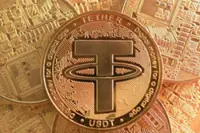Failed cryptocurrency exchange FTX says that nearly all of its customers will receive the money back that they are owed, and some will get more than that, according to its reorganisation plan. Compared with the outcomes of most bankruptcies, FTX is shaping up to be an improbable success, considering that creditors often battle it out for just pennies on the dollar. — AP
Arush Sehgal and Acaena Amoros Romero saw their life savings disappear, all at once, into the vortex of FTX’s fraud-fueled collapse.
Then the crypto market staged a stunning surge back from the depths of the 2022 crash. Over the next year and a half, Bitcoin climbed so much, in fact, that by their count what they had entrusted to FTX – if it weren’t tied up in bankruptcy court – would have swelled to at least US$4mil (RM18.72mil).





